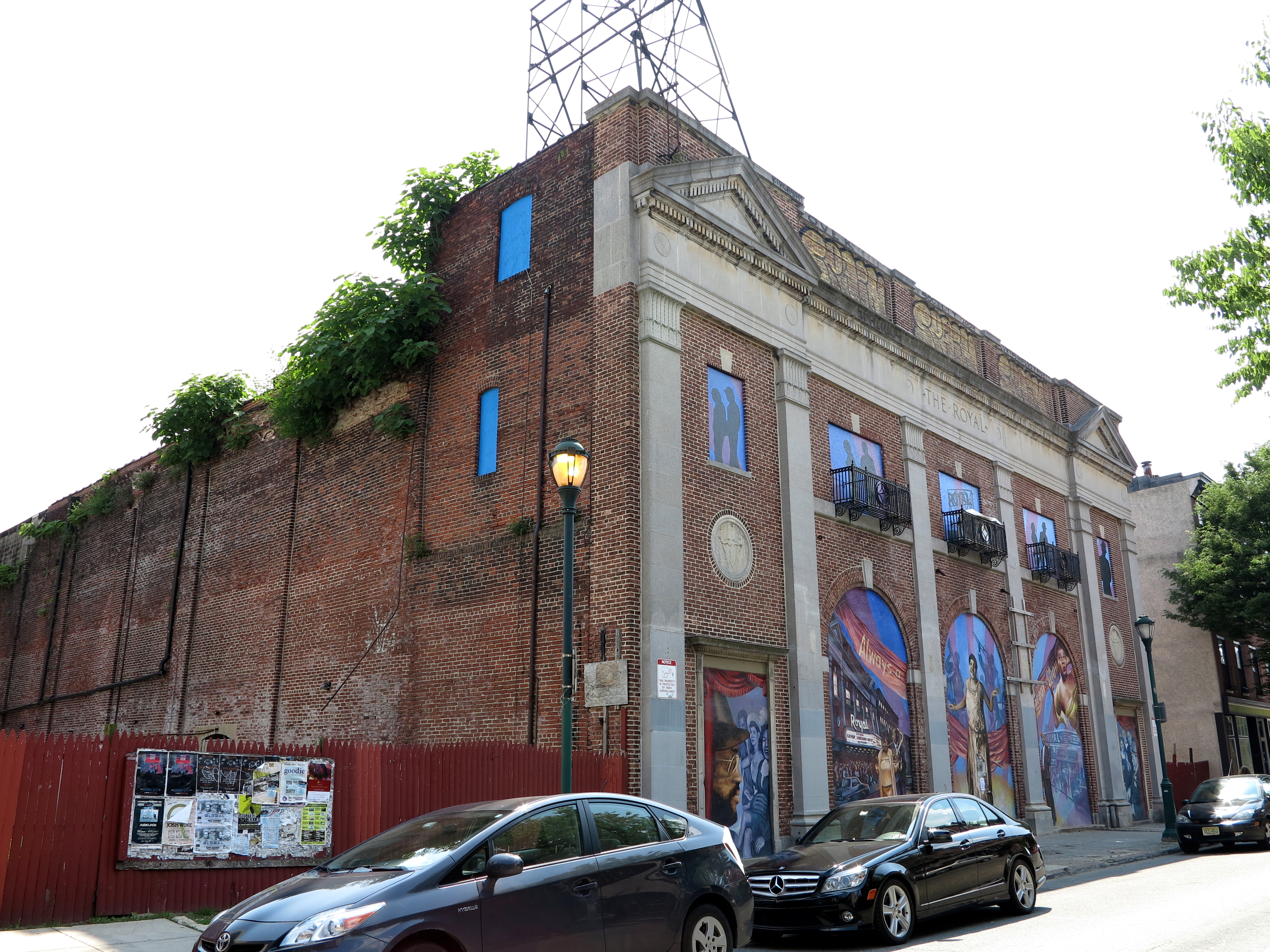Royal Theater’s reuse not feasible without subsidy

“I don’t want to assign blame. It’s just been a vacant building for a very long time.”
The Royal’s condition is “well beyond what can be reasonably rehabilitated. I think this is the type of application that the hardship component of the ordinance was written for.”
– Dominique Hawkins
After 45 years of vacancy, is the historic Royal Theater so far gone that its reuse is no longer feasible?
The Royal’s owners will have to convince the Philadelphia Historical Commission that the answer to that question is yes in order for their plans for a mixed-use redevelopment of the South Street site to advance.
The Royal, a significant entertainment venue where black Philadelphia watched performers like Fats Waller on piano and Paul Robeson on film, was listed in the Philadelphia Register of Historic Places in 1978.
Universal Companies, which has owned the Royal since 2000, has partnered with Dranoff Properties to construct a new building behind the Royal’s old façade to house ground-floor retail along South Street and 45 residential units. First the Historical Commission must be persuaded that the forced retention of the Royal Theater creates an undue financial burden.
To be granted a financial hardship by the Historical Commission, the city’s preservation law states the commission must be convinced that the building “cannot be used for any purpose for which it is or may reasonably be adapted.” Furthermore, to justify the Royal’s demolition, the owners must also “demonstrate that sale of a property is impracticable, that commercial rental cannot yield a reasonable rate of return, and that other potential uses are foreclosed.”
If Tuesday’s hearing before the Historical Commission’s Committee on Financial Hardship is any indication, the path ahead should be smooth: The committee, with four members present, marched through a brief preliminary hearing and unanimously voted in support of the hardship application. The full commission will consider the hardship case at a hearing on July 10.
Universal Companies Executive Vice President and CFO, Shahied Dawan, walked the committee through the Royal’s history since the company purchased the site from the Preservation Alliance in 2000. The last 15 years, he said, included various conditions assessments, two significant attempts to create an entertainment complex focused on the site, the securing (and in one case loss) of grant funding to stabilize and redevelop the building, a failed sale, and overall maintenance challenges.
Dawan acknowledged that The Royal was in “very bad condition” when Universal purchased the property, but argued that it was never their hope to demolish the building. Though there was little discussion of this point, Universal’s intent matters. Financial hardship cannot be self-induced. In other words, owners can’t knowingly purchase a decrepit but designated property and then claim that the building’s condition poses an undue burden and expect preservation relief.
Dawan estimated that during Universal’s tenure well over $500,000 was spent toward repairs, maintenance and planning. Despite this expenditure, Universal has struggled to stop the vines and trees growing through the roof and walls, and the steady leaks damaging the building throughout.
Consultants hired by both Universal and the commission agreed that the Royal’s prospects are grim-to-impossible given its poor condition, particularly when coupled with the building’s size and site. They determined that reuse possibilities are infeasible without “significant public subsidy.”
Among the reuse alternatives studied by Econsult, hired by Universal as part of their hardship application, were retail, single- and two-screen movie theaters, performance venue, residential, retail with residential, and retail with commercial.
“There is no scenario in which the building works. There is no reuse scenario that we can imagine that under realistic assumptions comes close to being financially viable,” Econsult’s Peter Angelides told the committee.
The Historical Commission’s independent hardship consultants, Real Estate Strategies, agreed and found alternative scenarios similarly infeasible, even when a more generous set of financial assumptions were considered. The commission’s consultants were also satisfied that Universal had pursued redevelopment options under several scenarios with various partners, its sale failed, and despite Universal’s efforts to the contrary the building has continued to deteriorate.
Citing the damage and loss caused by long-term vacancy, committee member Dominique Hawkins offered a resolution “with great sorrow” recommending to the historical commission that the application meets the financial hardship threshold.
“I don’t want to assign blame. It’s just been a vacant building for a very long time,” Hawkins said. The Royal’s condition is “well beyond what can be reasonably rehabilitated. I think this is the type of application that the hardship component of the ordinance was written for.”
Should the full commission grant a hardship, it would also have to approve designs for the new construction. As PlanPhilly reported last week, the commission’s architectural committee recommended approval of designs advanced by Universal with Dranoff Properties to construct a new mixed-use building, pending the hardship approval.
Additionally the Pennsylvania Historical & Museum Commission will have to approve any alterations and demolition plans because of a restrictive covenant on the Royal’s deed, placed on the property as a condition of a state preservation grant given to Universal in 2008.
WHYY is your source for fact-based, in-depth journalism and information. As a nonprofit organization, we rely on financial support from readers like you. Please give today.




